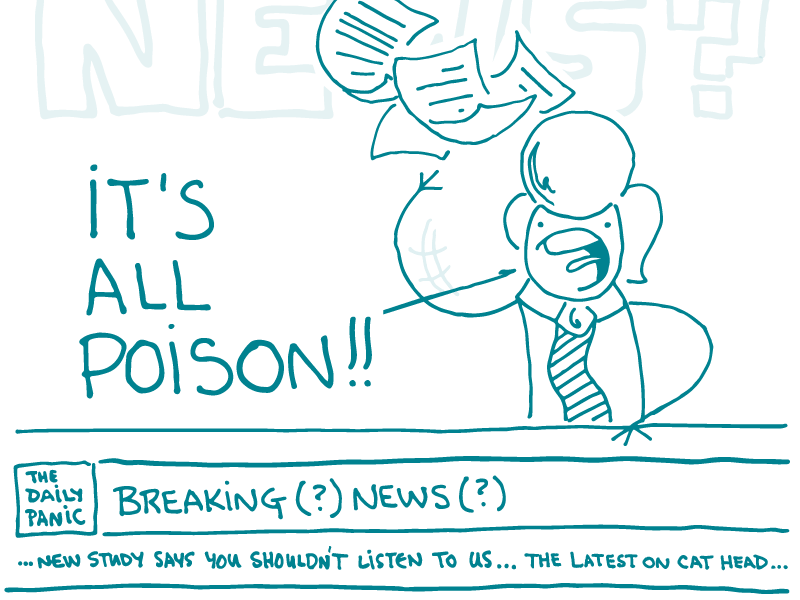
In the field of health communication, we spend lots of time raising awareness and helping people find the information they need to stay healthy. But what if your audience is convinced they’ve already got the right health info and it turns out the source is a snake oil salesman? Or, say, a movie star-cum-wellness guru?
It’s a sticky one! In the age of celebrity doctors and social media as a major news source, it can be hard to separate the evidence-based health information from all the wackadoodle health fads crowding our feeds.
That’s why we’re sharing these tips for debunking health shams, scams, and pseudoscience — without alienating your audience.
- Lead with empathy. If people are sick and haven’t found an effective treatment in the mainstream health care system, it’s only natural that they’d look elsewhere for relief. So withhold your judgment and give people the benefit of the doubt — listen to their stories and try to understand how they arrived at their beliefs.
- Ask questions. If someone is using a homeopathic remedy to treat an illness, try prompting them to investigate its claims. We’re guessing fans of one popular homeopathic flu remedy would be surprised to find that the active ingredient is duck livers and hearts — and those duck organs are so diluted that the pill is essentially a placebo.
- Encourage people to check their sources. Are they getting information from a practicing clinician or a well-meaning but oft-debunked TV doctor (update: well-meaning but oft-debunked TV-doctor-turned-Senate-candidate)? Are they following evidence-based dietary guidelines or getting their nutrition tips from an NFL quarterback? Prompt people to be critical of health advice when the source is a) entirely unqualified to give health advice or b) selling something.
- Pick your battles. Treating a breakup with healing crystals? That’s a pseudoscience fight best left unpicked. Refusing to vaccinate children in favor of building “natural immunity”? That’s a dangerous and false idea that puts innocent lives at risk.
You may be wondering what the big deal is. If people want to spend money on fancy green juices and crystal aura sprays and homeopathic sugar pills because their favorite celebrities are doing it, what’s the real harm?
There’s no harm in the placebo effect people can feel when they do these things. But when a person has a real illness, sham treatments waste time and money and can distract them from getting appropriate care. And the more stock people put in pseudoscience, the less bandwidth they have to absorb accurate, evidence-based health information.
The bottom line: When doing battle with fake health news, stay calm and help people find the best evidence to make their own informed decisions.
Browse recent posts